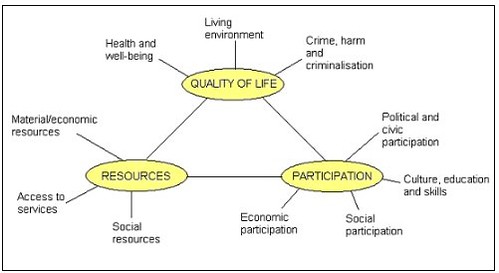Social equity is more than housing and mobility
One of my big reservations in response to the "Walkable Urban Places" conference mounted by the GWU Center for Real Estate and Urban Analysis and the Urban Land Institute was the trumpeting by Chris Leinberger of "a new measure of social equity."
His measurement of social equity is the percentage of income spent on both housing and transportation. The problem is that anyone outside of the real estate development community would recognize that this definition of "social equity" is a constrained or truncated definition that is inadquate to the task.
Showing this relationship graphically is not new and has been spearheaded by the Center for Neighborhood Technology (The H+T Affordability Index) and is the basis of the concept of the "Location Efficient Mortgage," which has been around for about 12 years, but hasn't been made widely available.
The point is that traditional measurements of housing affordability and underwriting guidelines for mortgage financing (that housing costs should be no more than 30% of household income) fail to take into account transportation costs. Generally, there is an inverse relationship between housing cost and transportation, places where people may pay "significantly more" for housing tend to be locations where residents pay "significantly less" for transportation, and vice versa.
Using LEM concepts, housing costs could be up to 39% of a household's income, depending on the proximity to and utilization of sustainable mobility infrastructure.
Social access vs. social equity. I would call the combination of (1) "how much money" people spend on housing and transportation as well as (2) the locational connectedness of where people live as two of the three elements of "social access." The third element of social access is locational connectedness in terms of access to civic assets like schools, libraries, cultural centers, and parks as well as commercial amenties like retail and restaurants and services.
Social access is a fundamental element of social equity, but it doesn't come close to providing a complete definition or measurement of it.
The European concept of social exclusion. Poking around in various University of Michigan libraries back in my college days, I came across work out of the UK about "social exclusion"/social inclusion. (Also about the concept of "social audits" being applied to for profit corporations.)
Achieving social equity has the same meaning as social inclusion.
The Bristol Social Exclusion Matrix (pictured below) developed as part of the The Multi-dimensional Analysis of Social Exclusion, contains three primary elements for measuring social exclusion with ten sub-elements. Interestingly, they don't seem to separate out transportation access although "Access to public and private services" is one of the sub-elements. I'd separate out transportation/mobility as a separate sub-element.

Labels: affordable housing, equity planning, housing choice, housing policy, public/social housing, transportation



0 Comments:
Post a Comment
<< Home